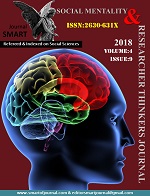Author :
Abstract
Günümüzde sinema endüstrisi politikanın doğal bir uzantısı olarak karşımıza çıkmaktadır. Bazı filmler devletlerin ulusal tezlerinin yayılması için bir araç olarak kullanılırken; bazı filmlerde tarihsel bir olayı veya şahsiyeti yeniden hatırlatma misyonunu yüklenmektedir. Bu bağlamda, 1990’ların hemen başlarında Yugoslav film endüstrisinin odak noktası Yugoslavya’nın çöküş sürecini önleyici çözüm reçeteleri geliştirmek olarak görünmektedir. Şüphesiz ki Yugoslavları bir arada tutma amaç doğrultusunda kullanılabilecek en rasyonel enstrüman Tito miti olarak karşımıza çıkmaktadır. Bir Yugoslav film klasiği olan Tito I Ja (Tito ve Ben-1992) bu amaç doğrultusunda hazırlanmış ve odak noktasına Tito’yu yerleştirmiş olan özellikle de o dönemde ortaya çıkmaya başlayan Sırp-Hırvat gerginliğini önlemeyi amaçlayan politik içerikli bir sinema filmidir. Bu çalışma, Tito I Ja filmine eleştirel bir bakış açısı sunmayı amaçlamaktadır. Çalışmanın daha anlaşılabilir olması adına filmle ilişkin analizler o dönemde Yugoslavya’da meydana gelen olayların analizi ile birleştirilmiştir.
Keywords
Abstract
In the present day, film industry might be considered as a natural extension of politics. In some case movies aim to distribute the national thesis of states, while some movies might aim to remind a specific historic event or personality. In this context, the products of Yugoslav film industry in the very beginning of 1990’s was trying to find solution recites in order to prevent the dissolution of Yugoslavia. Needless to mention that according to this goal, the myth of Tito was most effective tool in order to keep the Yugoslavs together. A Yugoslav movie classic Tito I Ja (Tito and Me-1992) constructs a great example of politic sophisticated movie which gives aims to alarm the Yugoslav people in the focus of Tito and re-connect the broken relations with Serbs and Croats. This paper offers a critic approach to Tito I Ja movie by simultaneously analyzing the developments in Yugoslavia in the very beginning of 1990’s.
Keywords
- Alemdaroğlu, Ş. N. (2016). “History, Truth and Mythmaking in Thomas Kilroy’s The O’neill andBrian Friel’s Making History”, Atatürk Üniversitesi Sosyal Bilimler Enstitüsü Dergisi, 20(3): 856.
- Bunce, V. (1995). “The Elusive Peace in the Former Yugoslavia”, Cornell International Law Journal, 23(3): 710.
- Clark, J.N. (2005). “Slobodan Milosevic: A Case Study of the Criminal Leader” PhD. Thesis, University of Nottingham, Notthingham
- Ellul, J. (2009). The Political Illusion, Wipf and Stock Publishers, Eugene.
- Engert, S. & Spencer, A. (2009). “Movies: Teaching and Learning about International Politics through Film”, Perspectives, 17(1): 83.
- Marolov, D. (2013). “The Reasons for the Collapse of Yugoslavia”, International Journal of Sciences: Basic and Applied Research”, 12(1): 251.
- Parenta, O. (2015). “Evolution and Crises: Development of Film Industry in Yugoslavia after WorldWar II” PhD. Thesis, The University of Queensland School of Political Science and International Relations, Brisbane
- Stevanovic, L. (2016). “Josip Broz Tito: Hero of the Nation or Traitor?”, Traditiones, 45(1): 105.
- Quart, L. (1991). “American Political Movies: An Annotated Filmography of Feature Films”, Film Quart, 44(4): 34.
- Uysal, A. E. (2016). “Post-Yugoslav Sinemada 1990 Sonrası Değişen Doğu-Batı Teması ve Yugo- Nostalji”, Uluslararası Bilimsel Araştırmalar Dergisi, 1(2): 117.
- Vinterhalter, V. (1976). Josip Broz Tito, Su Yayınları, İstanbul.
- Vladisavljevic, N. (2004). “Institutional Power and the Rise of Milosevic”, Nationalities Papers, 32(1): 35.
- Zastava (1949)
- Ciguli Miguli (1952) Kozara (1962)
- Tito I Ja (1992)
- Marshal Tito’s Spirit (1999) The Pianist (2002)
- Hotel Rwanda (2004)
- Cinema Komunisto (2011)Operation Argo (2012)
